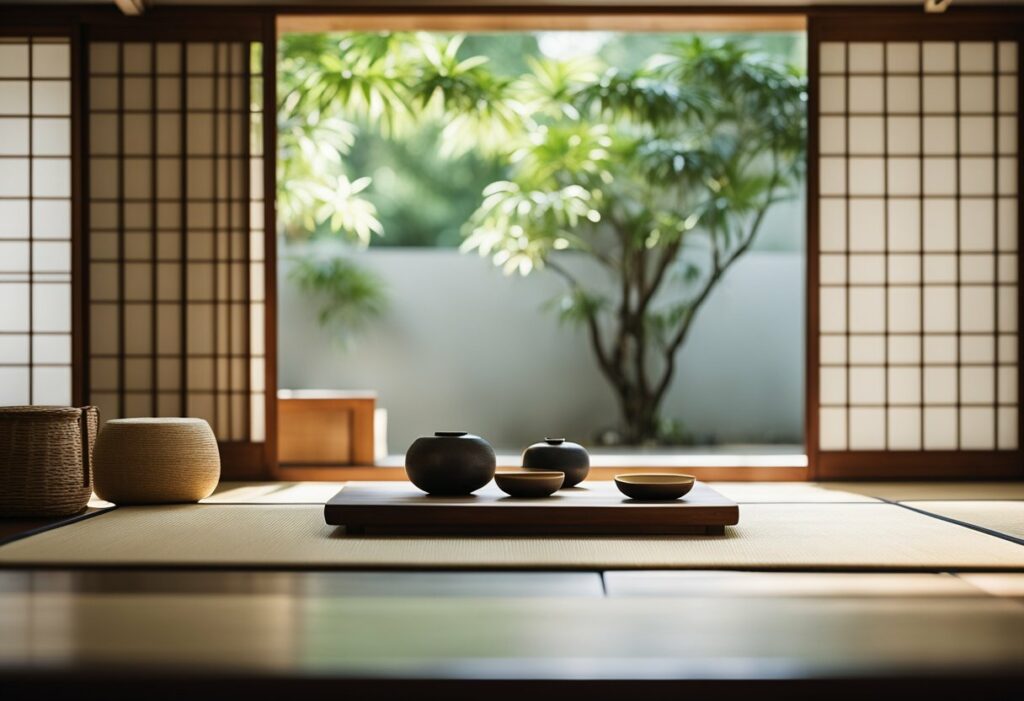Japanese Interior Designer in Singapore: Bringing a Touch of Zen to Your Home
If you’re looking for a way to transform your living space into a peaceful, minimalist oasis, a Japanese interior designer in Singapore may be just what you need. Japanese interior design is renowned for its simplicity, elegance, and attention to detail, and it’s a popular choice for homeowners who want to create a calming, Zen-like atmosphere in their homes.
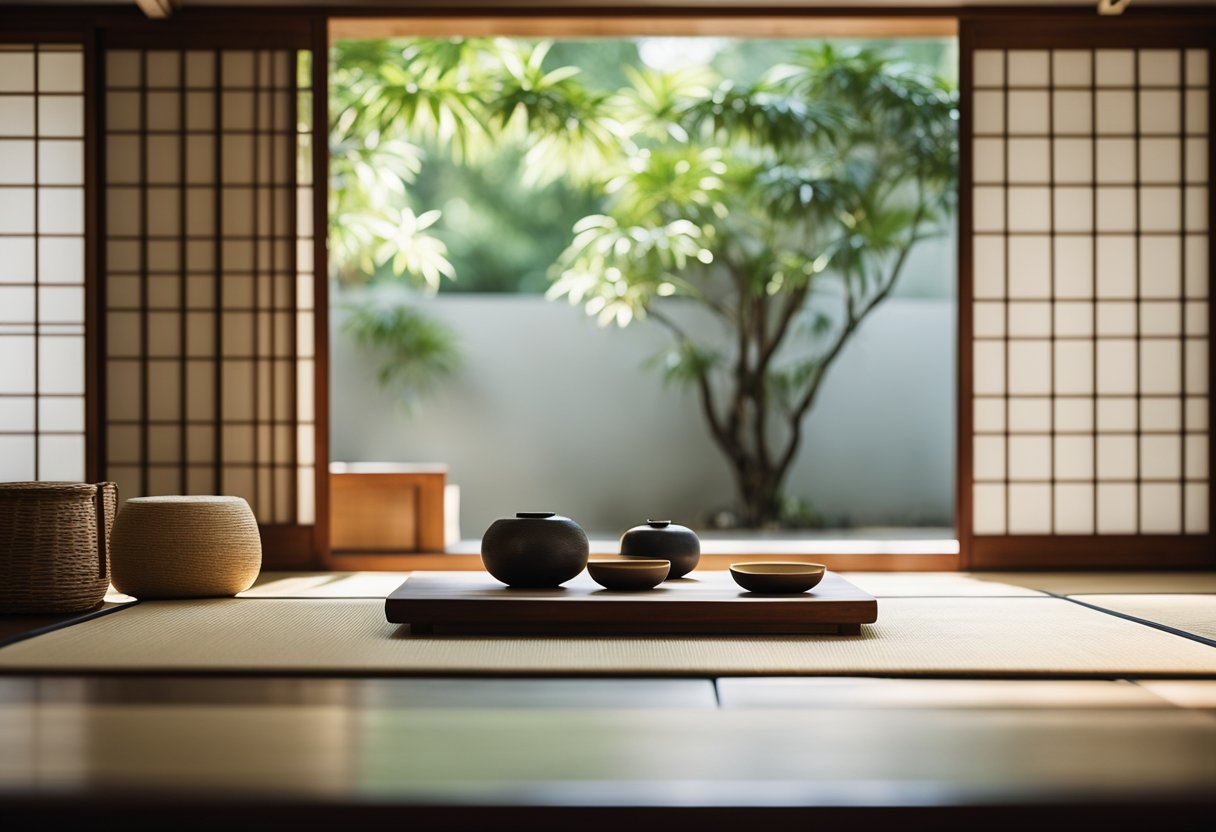
Fundamentals of Japanese Interior Design At the heart of Japanese interior design is the concept of wabi-sabi, which values simplicity, authenticity, and imperfection. This means that Japanese interiors are often characterized by natural materials, such as wood and stone, and a minimalist aesthetic that emphasizes clean lines and uncluttered spaces. Japanese interior designers also pay close attention to lighting, using soft, diffused light to create a warm, inviting atmosphere.
Executing Japanese Design Concepts in Singapore If you’re interested in incorporating Japanese design concepts into your home in Singapore, there are a few key things to keep in mind. First, look for an interior designer who specializes in Japanese design and has experience working with clients in Singapore. They should be able to help you choose materials, colours, and finishes that will create the desired effect, and they should also be able to advise you on furniture and decor choices that will complement the overall aesthetic.
Key Takeaways
- Japanese interior design is based on the concept of wabi-sabi, which values simplicity, authenticity, and imperfection.
- Japanese interiors are characterized by natural materials, clean lines, and soft, diffused lighting.
- To execute Japanese design concepts in Singapore, look for an interior designer who specializes in Japanese design and has experience working with clients in Singapore.
Fundamentals of Japanese Interior Design
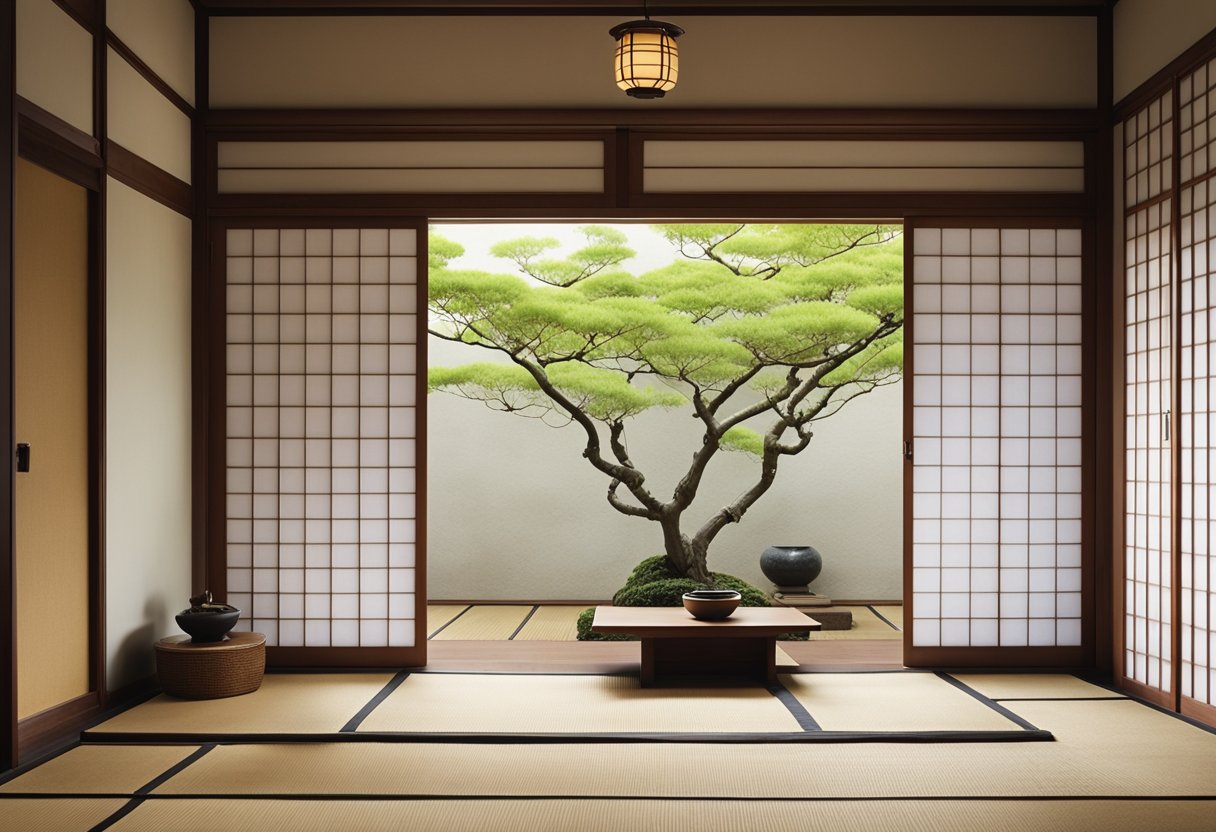
If you’re looking to create a serene and peaceful living space, Japanese interior design is a great choice. This style is all about minimalism, simplicity, and natural elements. In this section, we’ll explore the key concepts of Japanese interior design, including the essence of minimalism and simplicity, incorporating natural elements and light, and achieving balance and harmony.
The Essence of Minimalism and Simplicity
Japanese interior design is all about minimalism and simplicity. This means creating a space that is uncluttered, with clean lines and a neutral colour palette. The goal is to create a calm and peaceful environment that is free from distractions.
One popular trend in Japanese interior design is Japandi, which combines the elegance of Japanese design with the simplicity of Scandinavian design. This style is all about creating a space that is both functional and beautiful.
Another important concept in Japanese interior design is Wabi-Sabi, which is all about finding beauty in imperfection. This means embracing natural materials and textures, such as wood and bamboo, and celebrating the beauty of natural imperfections.
Incorporating Natural Elements and Light
Natural elements are a key component of Japanese interior design. This means incorporating materials such as wood, bamboo, and tatami mats into your space. These materials bring a sense of warmth and texture to your home, creating a space that feels inviting and comfortable.
Natural light is also an important element of Japanese interior design. This means creating a space that is open and airy, with large windows and plenty of natural light. This helps to create a sense of tranquillity and calmness, making your home a peaceful sanctuary.
Achieving Balance and Harmony
Achieving balance and harmony is another key concept in Japanese interior design. This means creating a space that is balanced and harmonious, with a sense of order and symmetry. This can be achieved through the use of sliding doors, such as shoji screens, which create a sense of flow and continuity throughout your space.
To create a truly harmonious space, it’s important to pay attention to the details. This means choosing the right colours, textures, and materials to create a cohesive and unified look. One popular brand that embodies the Japanese minimalist aesthetic is Muji, which offers a range of simple and elegant home furnishings.
In summary, Japanese interior design is all about creating a space that is calm, serene, and peaceful. By incorporating natural elements, embracing minimalism and simplicity, and achieving balance and harmony, you can create a home that is both beautiful and functional.
Executing Japanese Design Concepts in Singapore
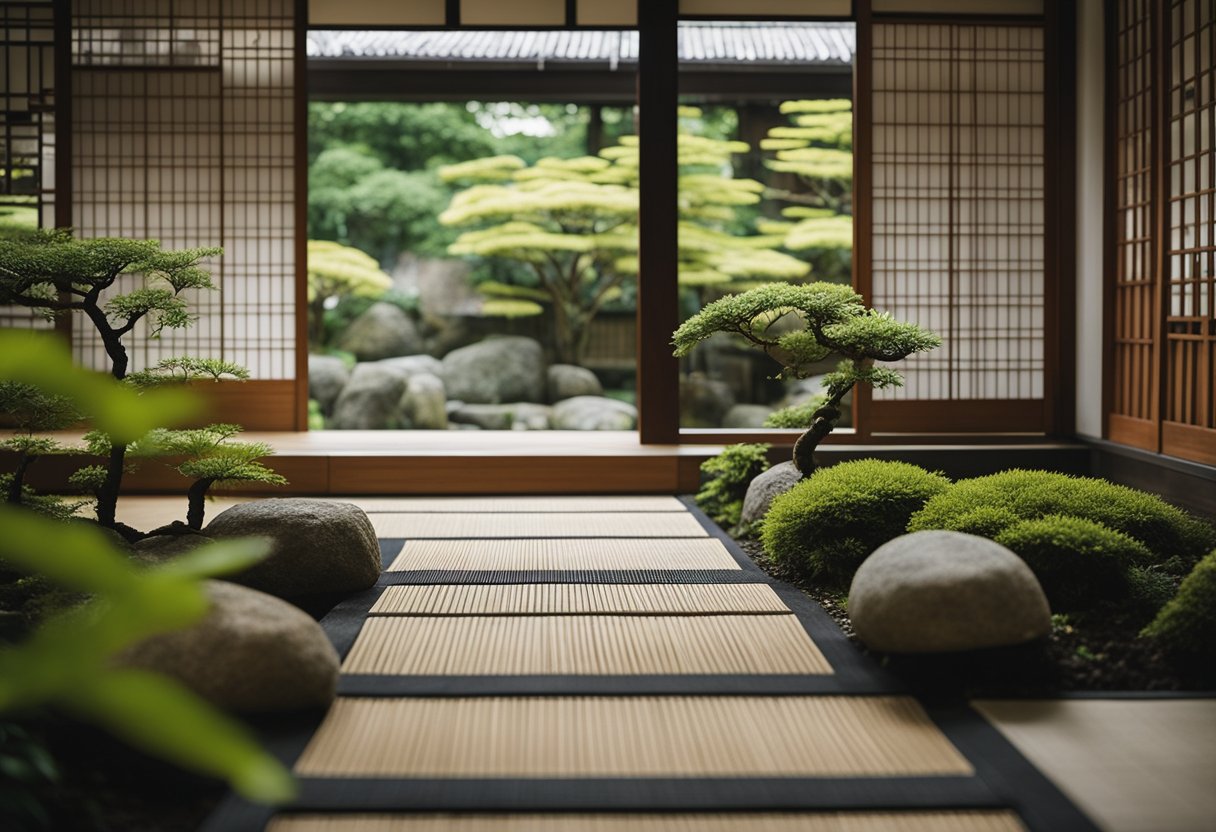
If you are considering Japanese interior design for your home in Singapore, it is important to understand the key concepts that define this style. Japanese design is all about minimalism, natural materials, and functionality. Here are some tips for executing Japanese design concepts in Singapore:
Selecting the Right Materials and Textures
One of the most important aspects of Japanese design is the use of natural materials and textures. Wood is a popular choice for flooring, furniture, and walls. Consider using wooden flooring or tatami flooring for a traditional Japanese feel. Other natural materials such as bamboo, stone, and paper can also be incorporated into your design. Textures such as shoji screens, rice paper, and woven fabrics can add depth and interest to your space.
Layout Planning for Functional Living Spaces
Japanese design is all about creating functional living spaces that are both beautiful and practical. When planning your layout, consider the flow of your space and how you will use it. Japanese design often incorporates sliding doors and screens to create flexible spaces that can be opened up or closed off as needed. You can also use low seating arrangements and minimal furniture to create a spacious and uncluttered feel.
Choosing Furniture for a Japanese-Inspired Home
When choosing furniture for your Japanese-inspired home, consider pieces that are simple and functional. Low seating dining tables in natural wood are a staple of Japanese design and can create a warm and inviting atmosphere. Minimalist interior design can be achieved by choosing furniture with clean lines and neutral colours. Incorporating greenery and plants such as bonsai trees can also bring a sense of nature and tranquillity to your space.
By following these tips and incorporating Japanese design concepts into your home in Singapore, you can create a beautiful and functional living space that is both calming and inviting.
Frequently Asked Questions
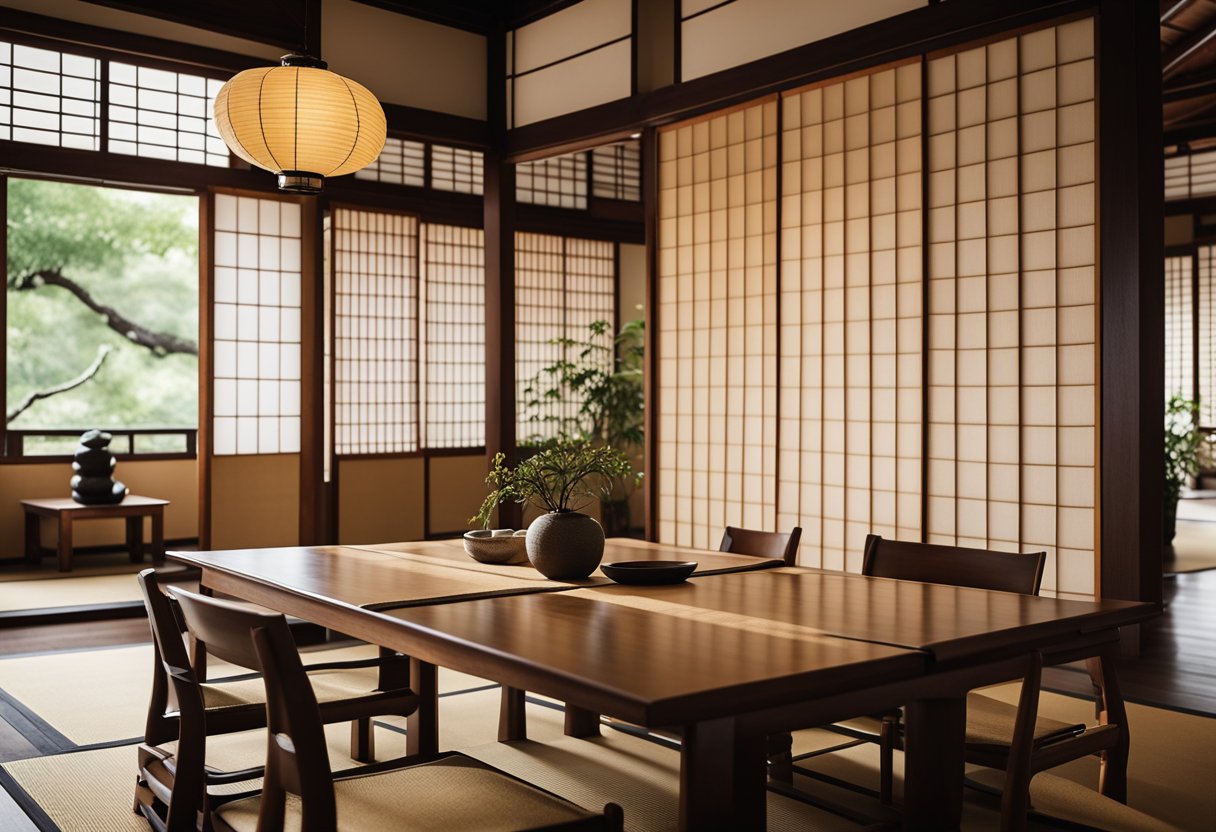
What are the defining elements of a modern Japanese-inspired interior in Singapore?
A modern Japanese-inspired interior in Singapore is characterised by its minimalism and focus on natural elements. The use of neutral colours, clean lines, and natural materials such as wood, stone, and paper creates a calming and peaceful atmosphere. The incorporation of indoor plants and natural light also adds to the overall aesthetic.
How much does it typically cost to hire an interior designer for a minimalist Japanese style home in Singapore?
The cost of hiring an interior designer for a minimalist Japanese style home in Singapore varies depending on the scope of the project, the designer’s experience, and the materials used. However, you can expect to pay anywhere from SGD 20,000 to SGD 100,000 for a full home renovation.
Who are some of the most renowned interior designers specialising in Japandi styles in Singapore?
Some of the most renowned interior designers specialising in Japandi styles in Singapore include JP Atelier, Zenith Arc, and 96 Interior. These designers have a reputation for creating beautiful and functional spaces that incorporate the principles of Japanese design.
Can you explain the concept of Wabi-Sabi in interior design?
Wabi-Sabi is a Japanese concept that celebrates imperfection, impermanence, and the beauty of natural materials. In interior design, this means incorporating elements that are imperfect, such as handmade pottery or furniture with visible knots and grain patterns. It also means embracing the natural wear and tear of materials over time.
What are the key differences between traditional Japanese and modern minimalist interior design?
Traditional Japanese interior design is characterised by its use of natural materials, such as wood, paper, and bamboo, as well as its focus on simplicity and functionality. Modern minimalist interior design, on the other hand, is more focused on clean lines, neutral colours, and a pared-down aesthetic. While both styles share a love of simplicity, they differ in their approach to materials and overall aesthetic.
How can I incorporate the principles of Japanese interior design into my Singapore home?
To incorporate the principles of Japanese interior design into your Singapore home, focus on simplicity, natural materials, and a neutral colour palette. Incorporate elements such as indoor plants, natural light, and handmade pottery to add warmth and texture to your space. You can also consider incorporating traditional Japanese elements such as shoji screens or tatami mats for an authentic touch.

